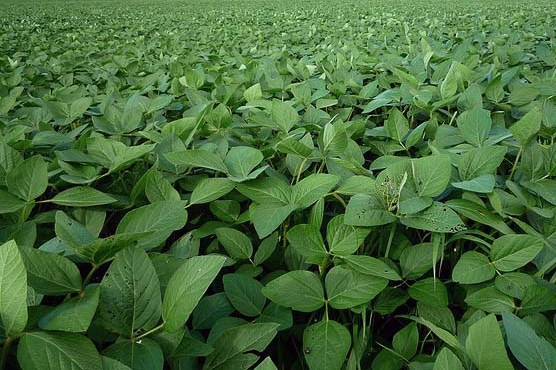

The DG who said this at a media conference in Abuja (today 5th April, 2018), noted that there is a current influx of illegal GM products in the country and urged dealers to obtain the necessary Biosafety permit from the agency before making such importation. This permit allows the Agency carry out risk assessments on GM Seeds.

Dr. Ebegba said the agency will not hesitate to prosecute those trading in GMOs and their by-products illegally. He noted that the Agency was established to ensure that GM products are safe for Nigerians as no product will be allowed into the country without the necessary safety analyses and risk assessments.
He recalled that there had been a meeting where potential importers were familiarized with the procedure to trade GMOs and their by-products.
The DG also stated that GM products in confined field trials will not be released to the market till they are confirmed safe to both human health and the environment.
Late fall can present challenges when it comes to fertilizer application. Poor timing of fall fertilizer applications can cause the risk of nutrient loss through runoff.
Fabian Fernandez, University of Minnesota (U of M) Extension nutrient specialist, reminds growers to wait until the soils are 50°F. and cooling before make fall anhydrous ammonia applications, but what if the soils are nearing freezing temperatures?
As soil temperatures move toward freezing, the chance of nutrients getting held in the soil decreases and the risk for loss increases, says Fernandez.
Here are five tips for best practices for late-fall fertilizer management from a University of Minnesota Crop News article to keep in mind from Fernandez; Daniel Kaiser, U of M Extension nutrient management specialist; and Paulo Pagliari, U of M Extension nutrient management specialist.
1. Never apply to frozen or snow-covered ground.
Do not apply fertilizer if the forecast is for a hard freeze within a week of application, and never apply fertilizer to frozen ground or snow-covered ground. To ensure nutrients in the fertilizer stay held where applied, they need time to react with the soil. Phosphorus, for example, needs seven to 10 days after application without a rain event to react. If the ground is frozen, those nutrients won’t hold in the soil.
2. Use tillage to prevent runoff.
3. Properly seal anhydrous bands to reduce risk of nitrogen loss.
For anhydrous ammonia applications, be sure the ground is sealed behind the knives. Cold weather will not prevent loss, and since anhydrous is a gas, it needs to be properly sealed.
4. Incorporate fall urea applications.
Urea needs to convert to ammonium in order to be held by the soil. There is significant risk that N will not have enough time to make that conversion in frozen soils. Fall urea applications are acceptable in areas of western Minnesota, but be sure to incorporate. This ensures the urea N gets converted to ammonium N, a form that is held by the soil. Ammonia volatilization can happen, even in cooler soils if it isn’t incorporated. UK To Partner Nigeria In Fish Farming, Infrastructure Dev’t
5. Remember the risk for spring loss.
All fertilizers are soluble in water and will move with water during runoff events. If applied to frozen ground, there will be little reaction with the soil and a greater potential for loss whenever water moves across the soil. If fall fertilizer conditions don’t favor fertilizer application, it’s better to wait until spring than risk nutrient loss.
Nggak Nyangka! Hidup Gue Berubah Total! Gue bukan siapa-siapa. Cuma anak kos biasa yang kerja serabutan buat nutup biaya hidup… Read More
What is the Main Cause of a Heart Attack? What is its Solution? A heart attack is the blockage of… Read More
In the vast economic arena, one term that often takes center stage, inciting extensive debates and discussions, is the "debt… Read More
De-Dollarization: The Changing Face of Global Finance The financial landscape is in a state of flux, with an intriguing economic… Read More
The curtains closed on a dramatic Bundesliga season with Bayern Munich standing tall once again, clinching their 11th straight title.… Read More
The Unfolding Story of Celine Dion's Health In recent news that has left fans across the globe stunned, iconic singer… Read More